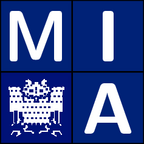
Diffusion Filtering
Home
About Us
People
Teaching
Research
Publications
Awards
Links
Contact
Internal
Noisy imagery constitutes a very frequent problem, appearing e.g. in
digital images that have been acquired under poor illumination conditions,
or in ultrasound images arising in medical imaging.
Thus, one of the most important problems in digital image processing
consists of denoising severely degraded images while preserving
important structures such as edges. Methods that are based on physical
equilibration processes like diffusion or heat conduction have led
to substantial progress in this field.
Nonlinear diffusion filtering is the oldest research field of our group members. Already in 1991, Joachim Weickert has started to perform research in this area. Here are some of the main results that have been obtained since then.
-
Edge-Enhancing Anisotropic Diffusion
Anisotropic models have been proposed that use diffusion tensors instead of scalar-valued diffusivities. Such approaches do not only allow for space-variant filtering, but also enable real direction-specific anisotropic smoothing of image structures. For instance, edge-enhancing anisotropic diffusion (EED) allows to inhibit smoothing across edge structures while still diffusing along them [1].
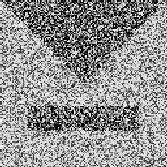
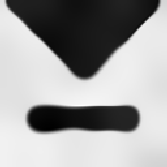
-
Coherence-Enhancing Anisotropic Diffusion
Coherence-enhancing diffusion (CED) is another anisotropic diffusion model. It has been specifically designed to enhance flow-like structures [2].
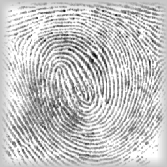
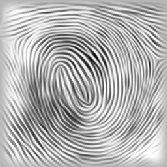
-
Well-Posedness and Scale-Space Theory
Joachim Weickert has written the first monograph on nonlinear diffusion filtering [3]. This book presents a well-posedness theory for the continuous, space-discrete and fully discrete setting. It covers existence, uniqueness and stability results, extremum principles, Lyapunov functionals and convergence properties. It has been cited more than 1000 times and can be downloaded for free.
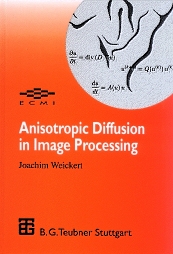
-
Relations to Regularisation Methods
We have shown that variational image regularisation methods are closely related to diffusion filters. Indeed, they may be regarded a fully implicit discretisations of diffusion filters in a single step. This has led to a time discrete scale-space theory for diffusion filtering [4]. -
Extensions to Vector- and Tensor-Valued Images
We have extended our diffusion methods to vector-valued images such as colour imagery; see e.g. [5]. Moreover, these methods have also been extended to matrix-valued data sets.
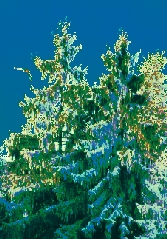
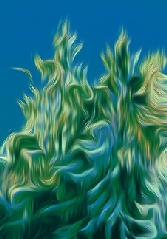
Some of our other research fields have been directly influenced
by our results on nonlinear diffusion filtering. For more details, go back
to our
research
overview.
-
J. Weickert:
Theoretical foundations of anisotropic diffusion in image processing.
Computing, Suppl. 11, 221-236, 1996.
- J. Weickert:
Coherence-enhancing diffusion filtering.
International Journal of Computer Vision, Vol. 31, 111-127, 1999.
- J. Weickert:
Anisotropic Diffusion in Image Processing.
ECMI Series, Teubner, Stuttgart, 1998.
[More information]- O. Scherzer, J. Weickert,
Relations between regularization and diffusion filtering,
Journal of Mathematical Imaging and Vision, Vol. 12, 43-63, 2000.
Revised version of Technical Report DIKU-98/23, Dept. of Computer Science, University of Copenhagen, Denmark, 1998.
- J. Weickert,
Coherence-enhancing diffusion of colour images,
Image and Vision Computing, Vol. 17, 201-212, 1999.
- J. Weickert:
MIA Group
©2001-2023
The author is not
responsible for
the content of
external pages.
Imprint -
Data protection